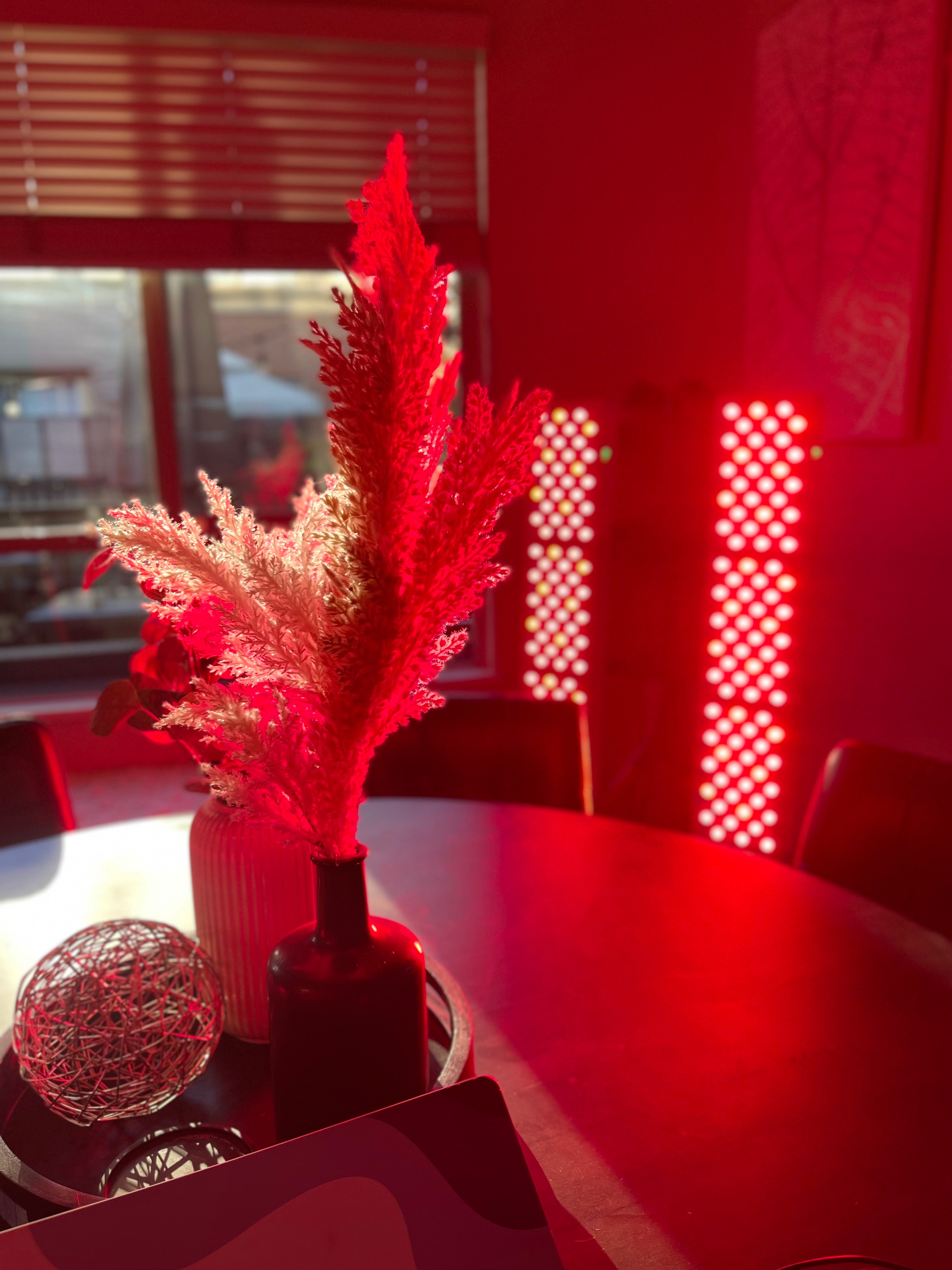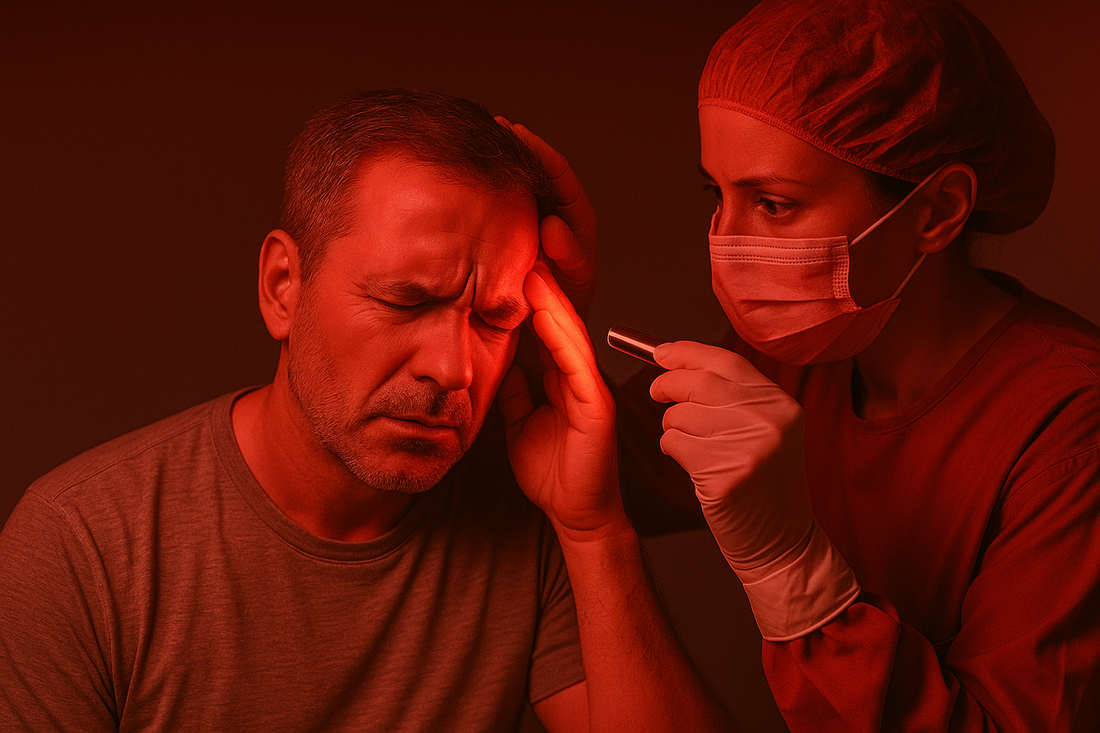In recent years, red and near-infrared light therapy (RLT and NIRLT) have surged in popularity for their purported health benefits. From skincare and anti-aging to pain management and wound healing, proponents argue that these therapies offer a wide range of health benefits with minimal side effects. However, with the rise in popularity also comes a surge in misinformation and myths. This comprehensive analysis aims to bust some of the most pervasive myths surrounding red and near-infrared light therapy.
Myth 1: Red and Near-Infrared Light Therapy Are New, Unproven Technologies
The Reality
Red and near-infrared light therapy are not new. Their origins can be traced back to the early 20th century when Niels Ryberg Finsen won the Nobel Prize in Medicine in 1903 for his use of light therapy to treat lupus vulgaris, a skin condition caused by tuberculosis. Since then, numerous studies have explored the benefits of light therapy, particularly red and near-infrared wavelengths.
These wavelengths penetrate the skin at different depths; red light penetrates up to 5mm, while near-infrared light can reach depths of up to 5cm. This ability to penetrate tissue allows these wavelengths to target muscles, joints, and even bones, making them versatile in medical and cosmetic applications.
Myth 2: Red and Near-Infrared Light Therapy Can Cure Any Ailment
The Reality
While red and near-infrared light therapy have been shown to offer a range of benefits, claiming that they can cure any ailment is a gross exaggeration. The efficacy of light therapy depends on several factors, including the condition being treated, the wavelength used, the intensity and duration of exposure, and the individual's biological response.
Scientific research supports the use of RLT and NIRLT for specific conditions, such as:
- Skin Rejuvenation and Anti-Aging: Stimulates collagen production, reduces wrinkles, and improves skin texture.
- Wound Healing: Promotes faster healing by enhancing cellular repair mechanisms.
- Pain Relief: Reduces inflammation and alleviates pain in conditions such as arthritis and muscle injuries.
- Hair Growth: Encourages hair regrowth in cases of androgenetic alopecia.
However, these therapies are not a panacea. They should be viewed as complementary treatments rather than standalone cures for chronic or severe medical conditions.
Myth 3: All Light Therapy Devices Are Equally Effective
The Reality
The effectiveness of light therapy devices can vary significantly based on several factors:
- Wavelength: Effective wavelengths for therapeutic purposes typically range between 600-950 nanometers (nm). Red light is generally in the 620-750 nm range, while near-infrared light falls between 750-950 nm.
- Power Density: Measured in milliwatts per square centimeter (mW/cm²), this determines the intensity of light exposure. Insufficient power density can render the treatment ineffective.
- Treatment Duration and Frequency: The optimal duration and frequency of treatments vary depending on the condition being treated and the specific device used.
Quality matters when it comes to light therapy devices. Consumers should be cautious of cheap, unverified devices that may not deliver the promised benefits and could potentially cause harm. All KiVO products have gone through rigorous testing to ensure reliability, effectiveness, and clinically backed results.
Myth 4: Light Therapy Has No Side Effects
The Reality
While red and near-infrared light therapy are generally considered safe, especially when compared to pharmaceutical treatments, they are not entirely free of side effects. Some potential side effects include:
- Skin Redness and Irritation: Overexposure or high intensity can cause temporary redness and irritation, especially in individuals with sensitive skin.
- Eye Damage: Direct exposure to intense light sources can damage the eyes. It is crucial to use appropriate eye protection during treatment.
- Hyperpigmentation: In rare cases, individuals may experience changes in skin pigmentation.
To minimize risks, it is essential to follow our guidelines, use appropriate protective measures, and consult with a healthcare provider before starting light therapy, particularly for individuals with underlying health conditions or those taking photosensitizing medications.
Myth 5: More Intensity Equals Better Results
The Reality
In light therapy, more is not always better. The concept of a "biphasic dose response" is critical here. This means that there is an optimal dose range where benefits are maximized, but beyond this range, the efficacy may plateau or even diminish. Overexposure can lead to adverse effects and potentially reduce the therapy's effectiveness.
For instance, in the case of wound healing, studies have shown that low-level light therapy can accelerate healing, but too high an intensity can actually delay the process. It is essential to adhere to recommended exposure times and intensities to achieve the best results.
Myth 6: Light Therapy Works the Same for Everyone
The Reality
Individual responses to red and near-infrared light therapy can vary widely. Factors influencing efficacy include:
- Age: Younger individuals may experience more pronounced results due to more active cellular processes.
- Skin Type: Different skin types can absorb light differently, affecting the therapy's outcomes.
- Health Status: Individuals with certain health conditions or those taking specific medications may respond differently to light therapy.
- Consistency: Regular and consistent use of light therapy is often necessary to achieve desired results.
Personalization and tailored treatment plans are crucial for optimizing the benefits of light therapy. Consulting with a healthcare professional can help determine the most effective regimen based on individual needs.
Myth 7: Home Devices Are Just as Effective as Professional Treatments
The Reality
While home devices for red and near-infrared light therapy can be convenient and beneficial, they are typically less powerful than professional-grade equipment used in clinical settings. Professional devices often offer higher power densities, more precise wavelength control, and the ability to treat larger areas of the body effectively.
KiVO is one of only a few brands that have our panels in both clinical and home settings.
However, this does not mean that all home devices are ineffective. Choose a reputable brand such as KiVO, follow usage guidelines carefully, and manage expectations, be mindful of the irradiance, and quality of the panel and LED's. For serious or persistent conditions, seek professional treatment.
Myth 8: Results from Light Therapy Are Immediate
The Reality
Patience is essential when it comes to light therapy. While some individuals may notice improvements after a few sessions, most benefits accrue gradually over time. For example:
- Skin Improvements: Reduction in wrinkles and improved skin texture typically become noticeable after several weeks of consistent use.
- Pain Relief: Relief from chronic pain may require regular treatments over a period of months.
- Wound Healing: Accelerated healing can be observed within days to weeks, depending on the wound's severity and the individual's overall health.
It is crucial to manage expectations and understand that while light therapy can offer significant benefits, it often requires sustained and consistent use to achieve and maintain results.
Myth 9: Red and Near-Infrared Light Therapy Are Too Expensive for Most People
The Reality
The cost of red and near-infrared light therapy can vary widely depending on the type of treatment and the device used. While professional treatments in medical or spa settings can be expensive, KiVO offers a number of affordable panels. The initial investment in a quality device can be cost-effective over time compared to ongoing professional treatments.
Insurance coverage for certain medically indicated uses of light therapy is also becoming more common, further reducing the financial burden for patients.
Myth 10: Light Therapy Is Only for Cosmetic Purposes
The Reality
While red and near-infrared light therapy are popular in the beauty and skincare industry, their applications extend far beyond cosmetic purposes. Some of the notable medical applications include:
- Pain Management: Effective in reducing chronic pain associated with conditions like arthritis, fibromyalgia, and muscle injuries.
- Neurological Benefits: Emerging research suggests potential benefits in managing neurological conditions such as traumatic brain injury, stroke recovery, and even cognitive decline in Alzheimer's disease.
- Dental Health: Used in dentistry for reducing pain and inflammation, promoting healing of oral tissues, and treating cold sores.
- Mood and Mental Health: Light therapy, particularly bright light therapy, is well-established in treating Seasonal Affective Disorder (SAD) and other forms of depression.
These diverse applications underscore the potential of light therapy as a versatile treatment modality with wide-ranging health benefits.
Myth 11: Red and Near-Infrared Light Therapy Is a Fad
The Reality
The growing body of scientific research and clinical evidence supporting the benefits of red and near-infrared light therapy indicates that it is far from a passing trend. Studies have demonstrated its efficacy in a variety of applications, and ongoing research continues to uncover new potential uses.
Furthermore, the technology has been adopted in numerous medical and therapeutic settings worldwide, validating its effectiveness and solidifying its place in modern healthcare. The integration of light therapy into mainstream medicine and wellness practices reflects its enduring value and potential for future innovations.
Conclusion
Red and near-infrared light therapy offer promising benefits for a range of conditions, from cosmetic improvements to serious medical applications. However, understanding the nuances and limitations of these therapies is crucial to maximizing their potential. By busting the myths and misconceptions surrounding red and near-infrared light therapy, we can better appreciate their capabilities and apply them more effectively.
The key takeaways include recognizing that while light therapy is not a miracle cure, it is a valuable tool in the therapeutic arsenal. Choosing quality devices, adhering to recommended usage guidelines, and consulting with healthcare professionals can help ensure safe and effective outcomes. As research progresses and our understanding deepens, the future of light therapy looks increasingly bright, offering new avenues for enhancing health and well-being.






